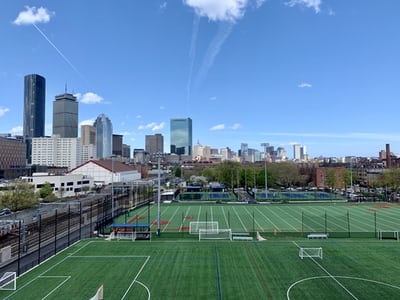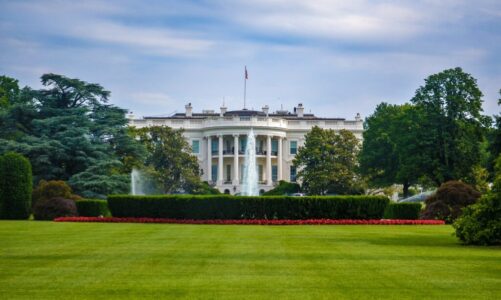Every winter, billions of people throughout the world celebrate a diverse array of holidays. These holidays unite families, encourage people to connect with their cultural heritage, and bring joy to all regions of the globe.
Learning about the origins, developments, and practices surrounding these holidays will allow us to become more aware of different cultures throughout the world.
The Germans Pioneered the Modern Christmas Tree
Many ancient European and Mediterranean peoples—including the Egyptians, the Romans, and the Celts—decorated their homes and temples with trees around the winter solstice. These trees were a symbol of life that often served as a reminder that crops and plants would start growing again in the upcoming spring and summer.
But it was the Germans who pioneered the Christmas tree as we know it today. In the 16th century, German Christians began bringing decorated trees into their homes for Christmas. Popular ornaments for those trees included lighted candles representing stars shining in the night sky.
German immigrants brought the Christmas tree tradition to the Thirteen British Colonies in North America (later the United States). Historical records show that German settlements in Pennsylvania began setting up Christmas trees as early as 1747. However, these trees were initially unpopular among Anglo-Americans, who viewed them as foreign, pagan, and contrary to their solemn Puritan traditions. Christmas trees only became popular in the United States in the 1890s due to subsequent waves of German immigration that undermined the old Puritan culture and created a new spirit of festivity.
Three Kings’ Day is a Major Part of Christmas Season in La Hispanidad
While people in the United States often associate Christmas with December 25th, in the Spanish-speaking world (Spanish: La Hispanidad), Christmas refers to an entire season of festivity that encompasses many different winter holidays. One of the most famous of these holidays is Three Kings’ Day (Spanish: El Día de los Tres Reyes Magos)—a holiday that is just as important for Spanish-speaking people as Christmas Day (Spanish: El Día de la Navidad) itself.
The holiday is based on a biblical tale where the Three Kings each gave a different gift to the baby Jesus: gold (representing Jesus’s status as king of the Jews), frankincense (representing Jesus’s divinity), and myrrh (representing Jesus’s eventual death).
Children in Spain and Latin America celebrate Three Kings’ Day by leaving their shoes by the door so that the Three Kings can give them presents. Many families also leave gifts of salt and grass for the Three Kings’ camels.
Parades and performances are another common way to celebrate Three Kings’ Day. Throughout Spain and Latin America, people gather in the cities to watch spectacular parades commemorating the holiday.
One of the most popular dishes for Three Kings’ Day is the Rosca de Reyes (English: kings’ bagel), a sweet donut-shaped bread that represents a King’s crown. The bread is often decorated with fruits, caramel, chocolate, jelly, or cream cheese.
Kwanzaa Promotes Solidarity Among Africans and African Americans

Kwanzaa is a secular holiday celebrated by people of African descent, especially African Americans, from December 26th to January 1st. The holiday was created in 1966 by Dr. Maulana Karenga, a professor of Africana Studies at California State University. Karenga sought to strengthen unity and hope within the African American community after a series of race riots took place in Los Angeles the previous year.
Kwanzaa as a holiday does not belong to any particular faith. Instead, its purpose is to emphasize the shared African heritage of Africans, African Americans, and other members of the African diaspora. People of African descent celebrate the holiday regardless of their religious affiliation. For example, in the United States, African American Christians celebrate both Christmas and Kwanzaa.
The name Kwanzaa comes from the Swahili phrase matunda ya kwanza, meaning “first fruits” in English. Swahili words are used to designate different aspects of Kwanzaa. The holiday centers around seven principles, which have both Swahili and English names: umoja (unity), kujichagulia (self-determination), ujima (collective work and responsibility), ujamaa (cooperative economics), nia (purpose), kuumba (creativity), and imani (faith).
Kwanzaa also includes seven symbols, with their names in Swahili and English being: mazao (crops), mkeka (mat), kinara (candleholder), muhindi (corn), kikombe cha umoja (unity cup), zawadi (gifts), and mishumaa saba (seven candles). Three of the seven Kwanzaa candles are red to represent the struggles that people face; three candles are green to represent land and hope for the future; and one candle is black to represent people of African descent throughout the world.
Hanukkah is the Jewish “Festival of Lights”
Hanukkah is a Jewish winter holiday usually celebrated in December, though the exact date varies every year due to differences between the Hebrew calendar and the Gregorian one. The holiday celebrates the liberation of ancient Israel from the Seleucids (Syrian-Greeks) and the subsequent restoration of the Holy Temple in Jerusalem. According to the story, the Israelites thought they only had enough oil to light up their temple’s menorah (candelabrum) for one day, though the oil surprisingly lasted for eight days.
Hanukkah is celebrated by lighting candles on a nine-branched menorah. The candle on the tallest branch in the menorah, known in Hebrew as the shamash (שמאש, English: attendant), is used to kindle the other candles. One candle is kindled on the first night, two candles are kindled on the second night, and so on until eight candles are kindled on the eighth night.
To commemorate the story of the oil that lit up the menorah for eight days, Jewish people often eat foods fried in oil on Hanukkah. Two of the most well-known Hanukkah foods are the latke (לְבִיבָה, English: pancake), a potato-based delicacy pioneered by Yiddish-speaking Jews in Eastern Europe; and the sufganya (סופגניה, English: doughnut), a deep-fried dish originating in Israel.
Celebrations Throughout the World
For billions of people from all corners of the globe, the winter holidays are a time of joy and festivity. People reunite with their families, enjoy fun parties, attend exciting parades, eat delicious foods, and connect with their cultural heritage.





I like shak ragoler article about winter holidays around the world. I learned a lot new things. It was very interesting.